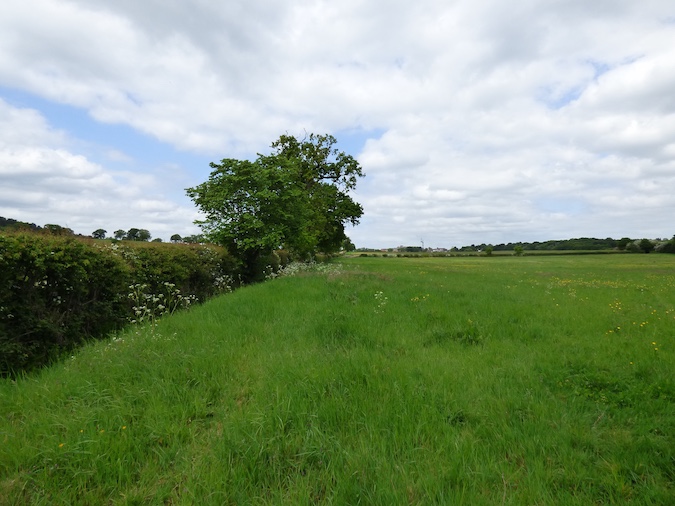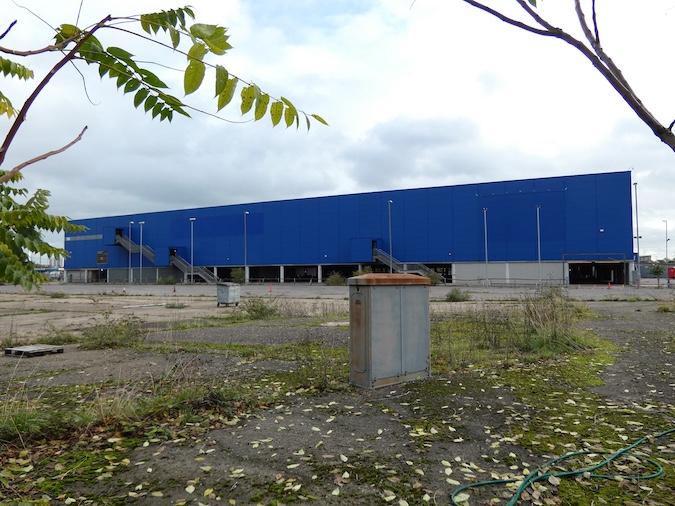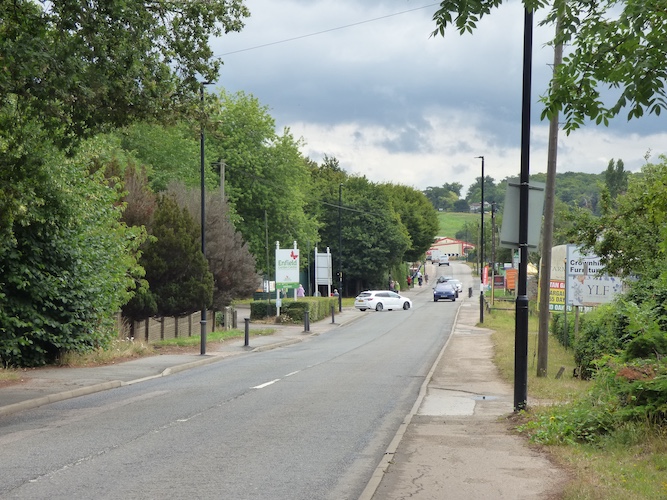Local plan examinations are long, complex and – let’s be honest – often pretty dull to sit through.
A council will draw up hundreds of pages of evidence and analysis to justify how and where it intends to provide new homes and employment space to meet its targets for the next two decades or more. News interest is usually limited to a few concerns here and there over the odd plot of land. But in Enfield – the borough I cover for my paper Enfield Dispatch – the council’s proposals for 9,651 homes on the Green Belt have provided endless controversy to write about, going back several years.
My first story on the topic was a splash in December 2018 carrying the headline: “Council set for showdown with mayor over new homes”. The opposition Conservatives had failed to win Labour backing for a motion calling on the council to ban housebuilding on the Green Belt. The next day, Sadiq Khan was asked about it at Mayor’s Question Time. He said he would object to any plan in breach of his planning policies and that it was “important to protect the Green Belt”.
Two public consultations on the Enfield Local Plan, one in 2021 and the other in 2024, generated huge levels of opposition. Going into the start of the public examination this year, therefore, I was sure these were going to be a very newsworthy set of hearings.
***
I was not wrong. On day one, in January, the “showdown” with the Mayor I had predicted six years earlier came to pass – but not exactly in the way expected. Khan sent his top planning official, Lisa Fairmaner, to speak on his behalf. She announced the Mayor had concluded that building on Green Belt was now necessary since the new national government’s target of 88,000 homes per year in the capital could not be “achieved wholly within London’s urban extent” and that “the Green Belt should be reviewed and alterations proposed”.
This statement came with a caveat, however. Even with the U-turn, the Enfield Local Plan was proposing homes on Green Belt sites that City Hall deemed “unsustainable”, thanks to their lack of existing public transport links. For that reason, the Mayor would still be objecting to them.
Reacting to that news at the hearing, council barrister Matthew Reed KC tried to seize the initiative. “There was much in that statement that was supportive of the approach we have taken,” he insisted. “I take the point about [the need for] sustainable development, but it [the U-turn] does alter the landscape in which the local authority will need to consider things. It does suggest our approach is aligned with the future.”
Long-time local campaigner Carol Fisk countered: “Given the Mayor has announced a London-wide Green Belt review, is it not jumping the gun to be including the Green Belt in Enfield when the review could find sites [elsewhere in London] without the need for Enfield?”

This exchange essentially set the tone for the rest of the hearings. On the one hand, the council wanted to show it was being progressive by proposing to build on the Green Belt and was ahead of the curve – as both the new Labour government and Mayor of London were now open to the idea. On the other hand, local campaigners and opposition Conservatives maintained the council was rushing to build on Green Belt and had still not done its homework properly, such that, even now, it had failed to win City Hall support.
Later during the first stage of hearings, the council admitted there would be “high harm” caused to some of the Green Belt sites chosen for new housing. Government-appointed inspector Steven Lee pressed the council on whether it had taken “all reasonable steps” to find alternative locations for the number of new homes needed, which it insisted it had.
But local community groups disputed this, mentioning examples of brownfield sites omitted from the plan and pointing out the borough’s flagship housing site on ex-industrial land – Meridian Water in Edmonton – was supposed to be accommodating 10,000 homes, but had instead been earmarked in the Local Plan for only 6,700.
This led Richard Knox-Johnston, chair of the London Green Belt Council, to speculate. He told the hearing: “I think, frankly, they [the council] weren’t keeping their brownfield register up to date. We might say that was on purpose – the Green Belt housing will help them make up a financial shortfall.” The claim was robustly denied by Reed.
***
Stage one of the Enfield Local Plan examination concluded at the end of January. Stage two – looking more closely at individual sites – began in June and concluded earlier this month. Stage three is now scheduled for October, with several modifications likely to be discussed.
Might these include reductions to the number of homes proposed for Green Belt land? It seems a distinct possibility, given the flaws in the council’s plans highlighted during the second stage of hearings over the summer.
First up for debate was Crews Hill, the largest Green Belt housing area proposed, with 5,500 homes. The area has a railway station, but only a single, twice-hourly bus service, and very few people live there at present. Instead, Crews Hill (top photo) is largely commercial, known primarily for its horticultural businesses, including several garden centres and plant nurseries. As well as many such sites along the main road, the council also wants housing on some of the surrounding farmland, plus a golf course, which it owns.
Several affected businesses have already sold up to developers in anticipation of this change, but many more have not, and fragmented ownership remains a big obstacle. Asked by Lee how the civic centre would enable new housing on land where businesses refuse to leave, Reed admitted: “The council will consider the exercise of CPO powers as necessary.” Later on, Lee asked if such an approach was “justifiable”, to which Reed responded: “It is a process of last resort […] but it is exactly what the government wants to see happen to facilitate the delivery of sites and enable the scale of delivery.”
The council was also asked if its plans for Crews Hill would lead to a net loss of jobs, but was unable to give a straight answer. In terms of public transport, a new bus service is proposed, but Transport for London’s position remains that Crews Hill is unsustainable as a location.
The second biggest Green Belt housing site proposed is a number of adjoining greenfield sites used predominantly for farming and grazing which the council has collectively named “Chase Park”. It has proposed 3,700 homes being built there.
Although situated between two stations – Oakwood, on the Piccadilly Line, and Enfield Chase, operated by Great Northern – Chase Park (above) is within walking distance of neither and is again opposed by TfL as a housing site for this reason.
During the debate on the proposals, another rift emerged between the council and one of the major landowners. Comer Homes, owner of Vicarage Farm, was previously supportive and offered up part of its land for an extension of neighbouring Trent Country Park, which would be used to offset the loss of Green Belt.
But the developer has since U-turned – the farm is now making money, and it wants to maintain it for agriculture after all. This revelation irritated Lee, who said: “The policy as a whole keeps coming back to the country park. It is a crucial part of the vision. If it can’t be delivered in the way the council envisage it, it will have an affect on the planning balance.”
On the issue of “high harm” being caused to the Green Belt at Chase Park, Philip Russell-Vick, a chartered landscape architect commissioned by The Enfield Society to study the impact of new housing on the area’s undulating farmland, told the hearing: “It’s not the foothills of the Lake District or the Yorkshire Dales, but in terms of a London context it is a recognisable and highly valuable piece of landscape, and it should be considered as such.”
***
Curiously, the subject of the Green Belt also arose during a later debate on Meridian Water. Ikea – whose Edmonton store opposite Meridian Water Station closed in 2022 – wants to build 3,000 homes on the site. But the council disagrees, allocating 1,750 instead (below).

Rebecca Burnhams, representing the Swedish furniture giant, questioned why the council was advocating thousands of homes on the Green Belt in the west of the borough, when brownfield sites in the east could accommodate more. “There is a brownfield site here that is ripe for development,” she said. “While you have pressure being put on Green Belt sites, it is unclear to us why this site is not being maximised.”
Later on, during the same debate, the council again appeared to frustrate Lee by admitting it had neglected to include around 700 extra homes on another site within Meridian Water. The council denied, however, that adding these extra homes would have any bearing on the rest of the plan – such as the exceptional circumstances needed to justify Green Belt development. Whether the inspector agrees remains to be seen.
A discussion event about the Enfield Local Plan, the Green Belt, and the borough’s housing crisis will take place at Dugdale Arts Centre in Enfield Town on the evening of 15 September. It has been organised by The London Society and the Enfield Dispatch. On London editor Dave Hill will chair it. Buy tickets here.

